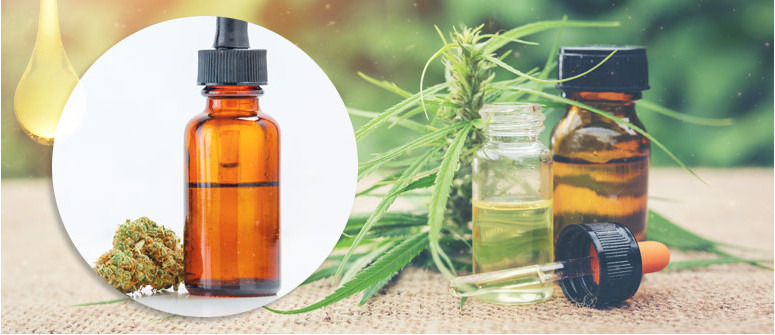How to make cbd oil at home

CBD oil has allowed people around the world to reclaim their well-being and perform at their best. While you can pick up a bottle at the store or online, many have found success making it from the comfort of their own home. In this article, we'll explain how it's possible, and how homemade oil stacks up to its commercially distributed peers.
TABLE OF CONTENT
- 1. The benefits of CBD oil
- 2. What options are there for making CBD at home?
- 3. A note on strain selection
- 4. Making CBD oil with alcohol
- 5. Making CBD oil with carrier oils
- 6. Advantages of professional CBD oil production
- 7. Making CBD oil at home: the bottom line
Making DIY CBD oil at home is pretty easy if you have the right ingredients. It will by no means be as powerful or as potent as professionally extracted and produced CBD oil (which is actually quite an in-depth and complicated process), but with a few easy steps, you can still harness some of the power hemp has to offer.
THE BENEFITS OF MAKING CBD OIL AT HOME
CBD is enjoyed in many forms, but oil is one of the most common ways to take it. People usually buy their CBD oil at health shops or dispensaries, and, depending on where you live, you may be spoilt for choice. However, for those with far fewer options, or those looking to avoid the expense of certain store-bought products, making CBD oil at home is a viable solution. Yes, you read correctly. With some hemp flowers, the right equipment, and a few simple ingredients, you'll have a great homemade CBD oil in no time.
WHAT OPTIONS ARE THERE FOR MAKING CBD OIL AT HOME?
If you're ready to get to it, you'll first have to decide which method you want to go with. There are two options for amateurs, and choosing one over the other won't make an extreme difference. However, there is a difference, and both options have their pros and cons.
The first requires using food-safe alcohol to extract CBD from hemp plant material. The second, which has become popular due to the gentle process involved, utilises natural plant oils to extract CBD. Hemp seed, olive, and coconut oils are popular choices here and are fairly effective solvents.
You might be wondering about a third extraction method using CO₂. It’s true, this has become the industry standard for quality CBD oils due to its “clean” nature. CO₂ extraction provides the most potent, controlled and verifiable extraction currently possible, but it requires extremely expensive equipment, a lot of space, and extensive knowledge to perform properly. For that reason, we'll stick to discussing the first two.
A NOTE ON STRAIN SELECTION
Before we get into that, though, you'll want to make sure you pick the right strain. As many strains nowadays are bred to have high THC and low CBD levels, you'll need to pay attention to what you select. If you'd like our suggestion, though, we have a couple in mind. Strains such as Nebula II CBD, for instance, are CBD-dominant, while others, like CBD Critical Mass, have a 1:1 ratio of CBD:THC. Both are suitable options; it just depends on your preference. There are even some strains now with CBD heavy ratios, containing next to no THC at all.
MAKING CBD OIL WITH ALCOHOL
INGREDIENTS
• Around 30g ground buds or 60–100g ground dried shake or trim
• High-proof, food-safe grain alcohol
HARDWARE
• Mixing bowl
• Baking tray
• Parchment paper
• Grinder
• Fine strainer such as a piece of cheesecloth or a sieve
• Catchment container
• Double boiler (a set of two fitted saucepans/pots stacked together with space between them)
• Wooden spoon
• Spatula
• Funnel
• Plastic syringe
INSTRUCTIONS
STEP 1
To begin, you need to ensure your plant matter is decarboxylated. To do so, grind it up until it has a fine even consistency, and place on a baking tray lined with parchment paper. Place it in a preheated oven at 110ºC (225ºF) and allow to cook for one hour.
STEP 2
Place your decarbed buds or trim into the mixing bowl and pour in enough alcohol to completely submerge the plant matter. Use the wooden spoon to stir the material for 5–10 minutes. During this time, the alcohol will pull out the desired constituents such as CBD and terpenes. Stirring will help to accelerate the process and dislodge the trichomes that produce these substances.
STEP 3
Next, you’ll need to separate the CBD-rich alcohol extract from the plant matter. Strain the solution through a piece of cheesecloth or a fine sieve into a bowl below. You’ll notice that the alcohol has a dark green colour to it. Repeat the process above with fresh alcohol a few more times to get the most out of your buds or trim. Eventually, the extract will start appearing more clear in colour, a sign that the material is now spent.
STEP 4
Now it’s time to set up the double boiler. If you don't have a setup like this already, an easy makeshift option is to fill the bottom of a saucepan with water, then place a stainless steel bowl into the saucepan that fits snugly, but doesn’t touch the bottom of the pan.
Pour the alcohol extract into the stainless steel bowl/top of the double boiler and apply gentle heat. High-proof alcohol is highly volatile and will evaporate at a low temperature. Keep the heat down and turn the heat on and off where necessary. It’s important to carry out this process away from any naked flames and ideally under an extractor fan or outdoors. The vapour produced when the alcohol evaporates is highly flammable and poses a real fire hazard.
Keep stirring the extract for 15–20 minutes while the alcohol evaporates. The mixture should turn extremely viscous.
STEP 5
After all the alcohol is removed, the extract should display a thick, tar-like consistency. Whilst it’s still warm, draw it up into a large syringe or multiple smaller ones. This makes it easy to store and administer.
MAKING CBD OIL WITH CARRIER OILS
INGREDIENTS
• Approx. 28g hemp flowers
• Approx. 450g carrier oil (hemp seed and coconut are best, but olive oil or any edible plant-based oil will also work)
HARDWARE
• Double boiler
• Baking tray
• Parchment paper
• Herb grinder (or knife)
• Cheesecloth, coffee filter, or something similar
• Glass jar with lid for storage
INSTRUCTIONS
STEP 1
First, use your grinder to render the hemp flowers to a fine consistency. They shouldn't be dust-like, but rather, very small, even pieces. This can also be done with a knife. However, you'll be working longer and will need to take special care in making the pieces even. The fine, even consistency will allow for maximum CBD extraction.
STEP 2
Next, line a baking tray with parchment paper and spread the ground-up flowers onto it. Place it in an oven heated to 110ºC (225ºF), and bake for an hour. This will begin the decarboxylation process, during which the inactive CBDA is converted into active CBD. The low heat and lengthy baking time allow this process to occur without losing terpenes. By the end of baking, the flower should be lightly brown and crisp.
STEP 3
Now it's time to mix the flowers and oil to begin the extraction process. Place the flowers and oil in the top of the double boiler, fill the bottom container with some water, and heat to a simmer. The simmer is important, as letting the mixture get past ~150ºC will evaporate the terpenes. This process takes around 2–3 hours, with the end product looking brownish-green.
STEP 4
At this point, carefully remove the pot/bowl with your hemp and oil from the heated water. Grab your jar (or air-tight container of choice), place your cheesecloth (or filter of choice) over the opening, and pour your mixture into the container. Make sure you've extracted as much oil as possible from the filtered-out hemp, then feel free to throw the flower away. Seal the container, store in a cool, dry place, and voila! You've just made yourself a nice batch of CBD oil. It won't be as potent as that made using an alcohol solvent, but you don't have to worry about hazardous leftover chemicals, and it'll likely taste better too.
ADVANTAGES OF PROFESSIONAL CBD OIL PRODUCTION
Now that we've covered how to make your own oil at home, we should compare it with the oil you’ll find in the store or online. The key distinction, of course, tends to be the extraction and filtration method. Rather than either method we've discussed, reputable CBD producers (like Cibdol) utilise CO₂ extraction to create safe, top-quality products. This process requires an expensive triple-chamber processor, large quantities of flower, and a trained expert to oversee the process. Using supercritical CO₂ for the extraction, however, leads to a product that's significantly more potent and pure than any homemade variety. If you're looking for a superior oil, CBD oil extracted using CO₂ is your best choice.
MAKING CBD OIL AT HOME: THE BOTTOM LINE
Making your own CBD oil at home is not only a valid option, but an easy and effective one. Will it be to the same quality as an oil that underwent CO₂ extraction? Not really. Will it still be a safe, quality product? As long as you follow our instructions carefully, absolutely.
That being said, if you're using CBD in attempt to help specific condition, we recommend you purchase a professionally extracted CBD oil. Commercial products will have the exact ingredients and their concentrations listed (often in milligrams), and you'll have the option of sourcing oils containing practically no THC.
.jpg)


.jpg)
